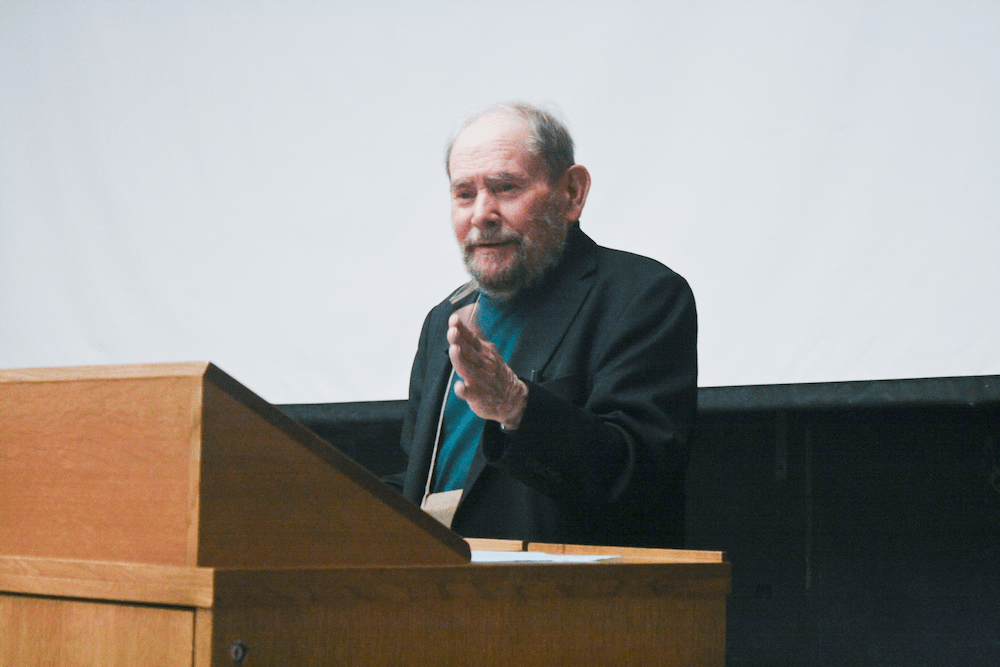On Tuesday, January 15, the University of Toronto played host to one of the world’s most influential and successful scientists: Dr. Sydney Brenner. Brenner was awarded the Nobel Prize in Physiology and Medicine in 2002 for his contributions to molecular biology.
Brenner was born in 1927 in South Africa, and completed his undergraduate education there. While studying to be a medical doctor, Brenner discovered his true calling in anatomy and physiology. He found he had a knack for laboratory research, so instead of pursuing a career as a doctor, he pursued an MSc degree. At the age of 18, he published his first scientific paper.
Brenner’s love of research led him to enroll in PhD studies at Exeter College of the University of Oxford in the UK. He proceeded to work alongside Francis Crick and James Watson in Cambridge as they first began to deduce the molecular structure of DNA that was later announced in 1953. Throughout the next two decades, Brenner worked with Crick to develop much of the central theory of molecular biology. This paradigm describes the flow of information in biological systems, from DNA (the information storage molecule), to RNA (the transcript or copy), to protein (the functional unit). These concepts are fundamental to understanding how cells encode, produce, and regulate the proteins that perform every essential function in cells from bacteria to humans.
Subsequently, Brenner focused his efforts on establishing the nematode worm, C. elegans, as an important model organism for studying developmental biology, neuronal development, and genetics. This organism is still widely used in scientific research today. You can find labs all across the Faculty of Medicine here at U of T that work solely with this one-millimetre-long worm. It is for this work that received the Nobel Prize in 2002.
Over 200 students, faculty, and guests gathered in the MacLeod Auditorium for Brenner’s talk, entitled “Reading the Human Genome.” It was a rare sight in modern science lectures. With no slides, PowerPoint presentation, or even chalkboards to accompany him, Brenner addressed his audience from the podium. He spoke about the Human Genome Project, and the great work that remains to be done now that so many genome sequences are known. He pronounced that, “computers are often very obedient, but rather stupid,” which prompted a few chuckles from the crowd, as he urged his young audience members to pursue the art of understanding the human genome.
The 86-year-old Nobel laureate gazed at the crowd with eyes full of excitement. He spoke with passion about tracing the secrets hidden in genomic sequences in order to discover the origins of complex life from evolution to the development of tissues and organs. The human genome holds information about our evolutionary past — where we came from and what changes brought us to where we are today — and deciphering these records could provide insight into millions of years of human history. Despite a successful life at the forefront of biological research, Brenner invoked fascination with one of the most basic evolutionary principles as he reminded the audience that the intricate human genome arose through random mutations from “some point far back, when we were probably just balls of cells”.
Most importantly, Brenner did not aim just to educate, but to inspire. He spoke often of challenges facing modern scientists, and the questions he believes we can answer with the data and technology available to us today. He ended his presentation by challenging his audience to contribute to “reconstructing the past” through genomics. With his passion and talent for science and public speaking, Sydney Brenner undoubtedly left his audience at the University of Toronto intrigued, inspired, and full of scientific curiosity.


